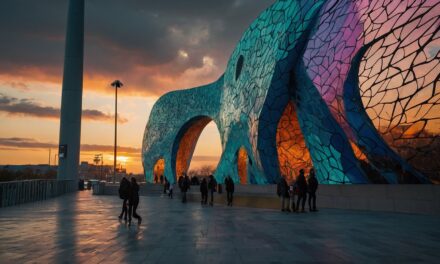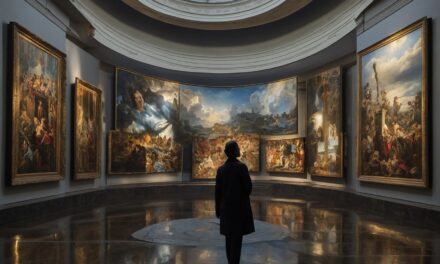Art has always been a reflection of human creativity, expressing emotions, ideas, and societal changes through various mediums. However, with the advent of technology, the landscape of art has undergone a significant transformation. One of the most compelling developments in recent years is the rise of digital art, which merges traditional artistic practices with modern technology to create innovative and immersive experiences.
Digital art encompasses a wide range of mediums, including digital painting, 3D modeling, animation, virtual reality (VR), and augmented reality (AR). Unlike traditional art forms, digital art leverages computers, software, and digital tools to create, manipulate, and display artwork. This fusion of art and technology opens up a world of possibilities for artists, allowing them to experiment with new techniques, styles, and concepts.
One of the most notable aspects of digital art is its accessibility. Unlike traditional art forms that require expensive materials and specialized skills, digital art can be created using relatively affordable tools and software. This accessibility has democratized the art world, enabling aspiring artists from diverse backgrounds to explore their creativity and share their work with a global audience.
Moreover, digital art offers unparalleled flexibility and versatility. Artists can easily edit, revise, and manipulate their artwork without the constraints of physical mediums. This fluidity allows for greater experimentation and innovation, pushing the boundaries of what is possible in the realm of art.
Furthermore, digital technology has revolutionized the way art is consumed and experienced. With the rise of digital platforms and online galleries, art is no longer confined to traditional exhibition spaces. Instead, it can be accessed and enjoyed by people around the world at any time and from any location. This democratization of art consumption has fostered a more inclusive and diverse art community, breaking down barriers and challenging traditional notions of art elitism.
In addition to its accessibility and flexibility, digital art also offers unique opportunities for collaboration and interdisciplinary exploration. Artists can collaborate with technologists, scientists, and other creative professionals to explore new ideas and push the boundaries of their respective fields. This interdisciplinary approach has led to the emergence of groundbreaking projects that blur the lines between art, science, and technology.
One such example is the field of generative art, which involves using algorithms and computer code to create dynamic and interactive artwork. Generative artists harness the power of technology to create artworks that evolve over time, responding to various inputs and stimuli. This fusion of art and artificial intelligence has led to the creation of mesmerizing visual experiences that challenge our perceptions of creativity and authorship.
Furthermore, digital art has opened up new possibilities for storytelling and narrative exploration. With the rise of VR and AR technology, artists can create immersive worlds and interactive experiences that engage audiences in unprecedented ways. These immersive narratives allow viewers to become active participants in the artwork, blurring the line between observer and creator.
In conclusion, the intersection of technology and art has given rise to a new era of creativity and innovation. Digital art has democratized the art world, making it more accessible and inclusive than ever before. Moreover, it has revolutionized the way art is created, consumed, and experienced, opening up new possibilities for collaboration, experimentation, and storytelling. As technology continues to evolve, so too will the possibilities of digital art, promising an exciting future for artists and audiences alike.





